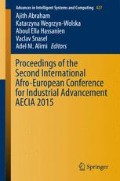Abstract
We propose an word alignment model with two core features: the ability to handle uncertainty in the morpheme matching process and in the selecting correct phrase alignments after its creation. These processes are based on the use of a morphological analysis tool and a large monolingual corpora, which is used for improving the alignment elements correspondence. The consideration of this tool is language-dependent for a special pair of the languages, although an Wikipedia data represents an adequate source of the training text that can be used in many cases, and even allows an unsupervised word segmentation. Based on these features, we propose an approach that captures the morphotactics which is common to the source text. The paper describes experiments in the general domain by using a tagset, and has been compared to a classical word alignment by the help of human judgment.
Access this chapter
Tax calculation will be finalised at checkout
Purchases are for personal use only
References
Bekbulatov, E., Kartbayev, A.: A study of certain morphological structures of Kazakh and their impact on the machine translation quality. In: IEEE 8th International Conference on Application of Information and Communication Technologies, pp. 1–5. Astana (2014)
Oflazer, K., El-Kahlout, D.: Exploring different representational units in English-to-Turkish statistical machine translation. In: 2nd Workshop on Statistical Machine Translation, pp. 25–32. Prague (2007)
Bisazza, A., Federico, M.: Morphological pre-processing for Turkish to English statistical machine translation. In: International Workshop on Spoken Language Translation 2009, pp. 129–135. Tokyo (2009)
Kartbayev, A.: SMT: A case study of Kazakh-English word alignment. In: Current Trends in Web Engineering, pp. 40–49. Springer, Heidelberg (2015)
Moore, R.: Improving IBM word alignment model 1. In: 42nd Annual Meeting on Association for Computational Linguistics, pp. 518–525. Barcelona (2004)
Brown, P.F., DellaPietra, V.J., DellaPietra, S.A., Mercer, R.L.: The mathematics of statistical machine translation: parameter estimation. In: Computational Linguistics, vol. 19, pp. 263–311. MIT Press Cambridge, MA (1993)
Vogel, S., Ney, H., Tillmann, C.: HMM-based word alignment in statistical translation. In: 16th International Conference on Computational Linguistics, pp. 836–841. Copenhagen (1996)
Dempster, A., Laird, N., Rubin, D.: Maximum likelihood from incomplete data via the em algorithm. J. Roy. Stat. Soc. B 39, 1–38. Wiley-Blackwell, UK (1977)
Creutz, M., Lagus, K.: Unsupervised models for morpheme segmentation and morphology learning. In: ACM Transactions on Speech and Language Processing, vol. 4, article 3. Association for Computing Machinery, New York (2007)
Beesley, K.R., Karttunen, L.: Finite State Morphology. CSLI Publications, Palo Alto (2003)
Goldsmith, J.: Unsupervised learning of the morphology of a natural language. In: Computational Linguistics, vol. 27, pp. 153–98. MIT Press, Cambridge (2001)
Altenbek, G., Xiao-long, W.: Kazakh segmentation system of inflectional affixes. In: CIPS-SIGHAN Joint Conference on Chinese Language Processing, pp. 183–190. Beijing (2010)
Kairakbay, B.: A nominal paradigm of the Kazakh language. In: 11th International Conference on Finite State Methods and Natural Language Processing, pp. 108–112. St. Andrews (2013)
Linden, K., Silfverberg, M., Axelson, E., Hardwick, S., Pirinen, T.A.: HFST—Framework for compiling and applying morphology. In: Systems and Frameworks for Computational Morphology, pp. 67–85. Springer, Heidelberg (2011)
Och, F.J., Ney, H.: A systematic comparison of various statistical alignment models. In: Computational Linguistics, vol. 29, pp. 19–51. MIT Press, Cambridge (2003)
Papineni, K., Roukos, S., Ward, T., Zhu, W.: BLEU: A method for automatic evaluation of machine translation. In: 40th Annual Meeting of the Association for Computational Linguistics, pp. 311–318. Philadephia (2002)
Dunning, T.: Accurate methods for the statistics of surprise and coincidence. In: Computational Linguistics, vol. 19, pp. 61–64. MIT Press, Cambridge (1993)
Lee, J.-H., Lee, S.-W., Hong, G., Hwang, Y.-S., Kim, S.-B., Rim, H.-C.: A post-processing approach to statistical word alignment reflecting alignment tendency between part-of-speeches. In: 23rd International Conference on Computational Linguistics, pp. 623–629. Beijing (2010)
Koehn, P., Hoang, H., Birch, A., Callison-Burch, C., Federico, M., Bertoldi, N., Cowan, B., Shen, W., Moran, C., Zens, R., Dyer, C., Bojar, O., Constantin, A., Herbst, E.: Moses: Open source toolkit for statistical machine translation. In: 45th Annual Meeting of the Association for Computational Linguistics, pp. 177–180. Prague (2007)
Tapias, D., Rosner, M., Piperidis, S., Odjik, J., Mariani, J., Maegaard, B., Choukri, Kh., Calzolari, N.: MultiUN: a multilingual corpus from united nation documents. In: Seventh conference on International Language Resources and Evaluation, pp. 868–872. La Valletta (2010)
Och, F.J.: Minimum error rate training in statistical machine translation. In: 41st Annual Meeting of the Association for Computational Linguistics, pp. 160–167. Sapporo (2003)
Federico, M., Bertoldi, N., Cettolo, M.: IRSTLM: An open source toolkit for handling large scale language models. In: Interspeech 2008, pp. 1618–1621. Brisbane (2008)
Heafield, K.: Kenlm: faster and smaller language model queries. In: Sixth Workshop on Statistical Machine Translation, pp. 187–197. Edinburgh (2011)
Clark, J.H., Dyer, C., Lavie, A., Smith, N.A.: Better hypothesis testing for statistical machine translation: controlling for optimizer instability. In: 49th Annual Meeting of the Association for Computational Linguistics, pp. 176–181. Portland (2011)
Snover, M., Dorr, B., Schwartz, R., Micciulla, L., Makhoul, J.: A Study of translation edit rate with targeted human annotation. In: Association for Machine Translation in the Americas, pp. 223–231. Cambridge (2006)
Denkowski, M., Lavie, A.: Meteor 1.3: Automatic metric for reliable optimization and evaluation of machine translation systems. In: Workshop on Statistical Machine Translation EMNLP 2011, pp. 85–91. Edinburgh (2011)
Author information
Authors and Affiliations
Corresponding author
Editor information
Editors and Affiliations
Rights and permissions
Copyright information
© 2016 Springer International Publishing Switzerland
About this paper
Cite this paper
Kartbayev, A. (2016). Using Kazakh Morphology Information to Improve Word Alignment for SMT. In: Abraham, A., Wegrzyn-Wolska, K., Hassanien, A., Snasel, V., Alimi, A. (eds) Proceedings of the Second International Afro-European Conference for Industrial Advancement AECIA 2015. Advances in Intelligent Systems and Computing, vol 427. Springer, Cham. https://doi.org/10.1007/978-3-319-29504-6_34
Download citation
DOI: https://doi.org/10.1007/978-3-319-29504-6_34
Published:
Publisher Name: Springer, Cham
Print ISBN: 978-3-319-29503-9
Online ISBN: 978-3-319-29504-6
eBook Packages: EngineeringEngineering (R0)

